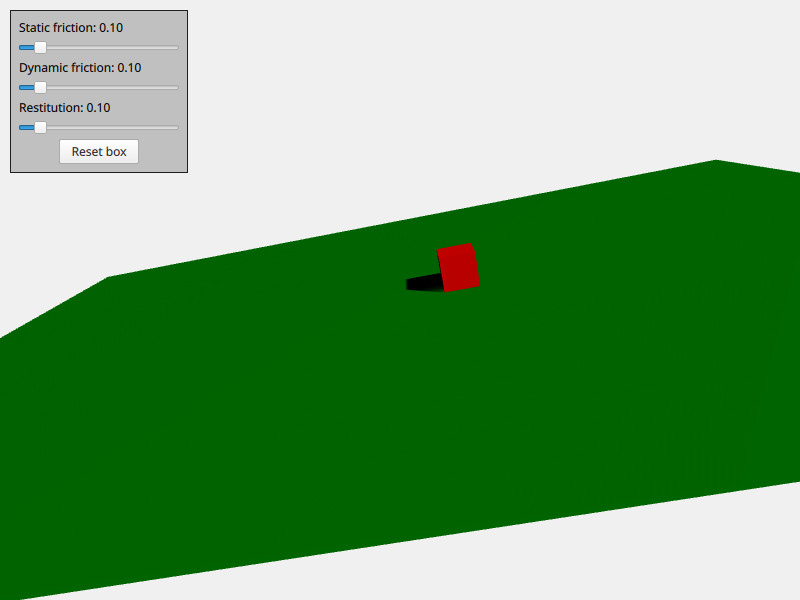Qt Quick 3D Physics - Material Example
Demonstrates using physical materials.

The Material example demonstrates how to control the material properties of a physical body. The scene contains the usual boilerplate of a View3D, PhysicsWorld, PerspectiveCamera and DirectionalLight. In addition to this the scene contains two physical bodies, namely a slightly tilted plane and a box. Every physical body has a physicsMaterial property containing a PhysicsMaterial node. PhysicsMaterial contains these three material properties; staticFriction, dynamicFriction and restitution and these are used to define how the body will act when colliding with and sliding against other bodies. There is a simple user interface that allows to interactively tweak the material of the box so you can see how it interacts depending on its material properties.
This is the QML code for the material:
PhysicsMaterial { id: physicsMaterial staticFriction: staticFrictionSlider.value dynamicFriction: dynamicFrictionSlider.value restitution: restitutionSlider.value }
The material is simply referencing the values of the user interface's sliders. This same material is then used for both the box and the floor:
DynamicRigidBody { id: box physicsMaterial: physicsMaterial massMode: DynamicRigidBody.CustomDensity density: 10 property vector3d startPosition: Qt.vector3d(700, 300, 0) position: startPosition Model { source: "#Cube" materials: PrincipledMaterial { baseColor: "red" } } collisionShapes: BoxShape {} } StaticRigidBody { eulerRotation: Qt.vector3d(-79, -90, 0) scale: Qt.vector3d(20, 30, 100) physicsMaterial: physicsMaterial collisionShapes: PlaneShape {} Model { source: "#Rectangle" materials: DefaultMaterial { diffuseColor: "green" } } }
Files:
© 2023 The Qt Company Ltd. Documentation contributions included herein are the copyrights of their respective owners. The documentation provided herein is licensed under the terms of the GNU Free Documentation License version 1.3 as published by the Free Software Foundation. Qt and respective logos are trademarks of The Qt Company Ltd. in Finland and/or other countries worldwide. All other trademarks are property of their respective owners.